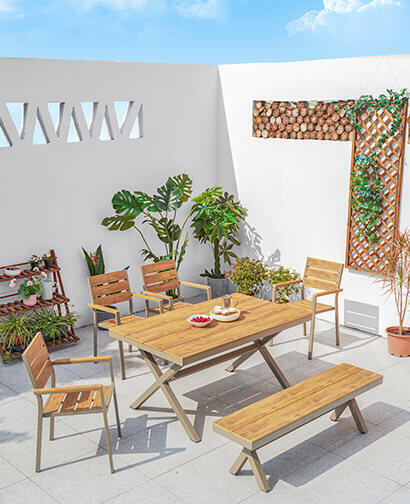Email format error
Email cannot be empty
Email already exists
6-20 characters(letters plus numbers only)
The password is inconsistent
Email format error
Email cannot be empty
Email does not exist
6-20 characters(letters plus numbers only)
The password is inconsistent


Polywood emerges as a groundbreaking material in contemporary design and manufacturing landscapes. It ingeniously combines the aesthetic appeal of traditional wood with the durability and sustainability of advanced synthetic components. Originating as a solution to combat the vulnerabilities of natural wood, such as decay and discoloration due to environmental factors, polywood has become a staple in both residential and commercial settings. Its versatility extends beyond outdoor furniture, finding applications in architectural elements, decking, and even interior design accents.
The genesis of polywood lies in a meticulous manufacturing process that transforms raw ingredients into a resilient, eco-friendly material. At its core, polywood amalgamates recycled plastics, finely milled wood fibers, and cutting-edge adhesives. This concoction undergoes rigorous blending and heating stages, resulting in a pliable composite ready for molding.
The shaping of polywood into its final form involves sophisticated compression and molding techniques. This phase not only determines the product's structural integrity but also dictates its aesthetic nuances. For instance, intricate designs and textures can be imprinted onto the polywood surface during the molding process, replicating the natural grain patterns found in traditional woods like oak or teak.
When juxtaposed with conventional materials, polywood's advantages become unmistakably evident. Unlike its natural counterparts, polywood exhibits unparalleled resistance to environmental stressors. It remains impervious to moisture-induced rot, UV-induced fading, and temperature fluctuations, making it an ideal choice for outdoor applications.
Furthermore, polywood champions sustainability. By repurposing recycled plastics and minimizing reliance on deforestation-prone wood sources, it curtails environmental degradation. Economically, the lifecycle cost benefits of polywood shine through; its longevity negates frequent replacement cycles, resulting in tangible cost savings over time.

Central to polywood's acclaim are its constituent materials, each contributing distinct properties. Recycled plastics endow it with robustness, resisting physical wear and tear. In contrast, wood fibers introduce natural aesthetics and texture, ensuring polywood's visual appeal mirrors that of authentic wood.
The addition of specialized adhesives and UV-resistant agents elevates polywood's performance metrics. These additives fortify its structural integrity, inhibit color fading, and extend its lifespan, culminating in a product that seamlessly blends form with function.
Manufacturing polywood transcends mere production—it's a harmonious blend of artistry and technology. Expert craftsmen synergize with state-of-the-art machinery, ensuring each polywood piece meets exacting standards. Whether crafting bespoke furniture or standardized fixtures, precision remains paramount.
Surface treatments epitomize this commitment to excellence. Polywood products undergo meticulous painting, sealing, and quality assurance protocols. These processes impart a lustrous finish, safeguard against environmental aggressors, and affirm product longevity.
In an era spotlighting sustainability, polywood emerges as a paragon of eco-conscious design. Its utilization of recycled materials curtails landfill contributions, mitigates resource depletion, and fosters a circular economy ethos. Moreover, polywood's durability obviates premature disposal, further reducing its environmental footprint.
In summation, polywood transcends its material composition, embodying a synthesis of innovation, sustainability, and craftsmanship. Its meteoric rise from niche novelty to mainstream staple underscores its intrinsic value and broad applicability. As design paradigms evolve and environmental imperatives intensify, polywood's role as a sustainable, aesthetically pleasing, and durable material seems destined for continued prominence. Embracing polywood signifies not merely adopting a material but endorsing a vision—one where design excellence harmonizes with ecological stewardship.